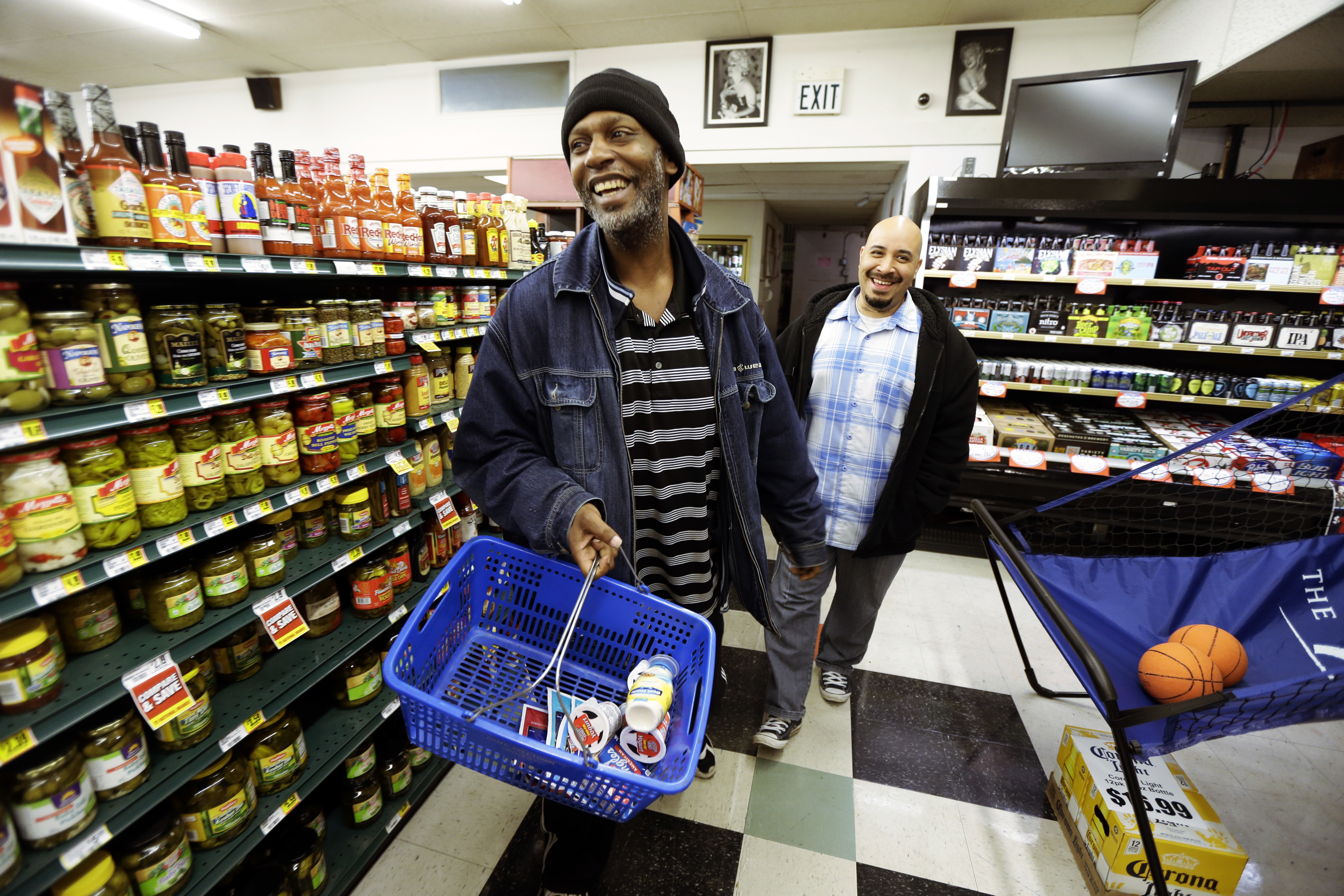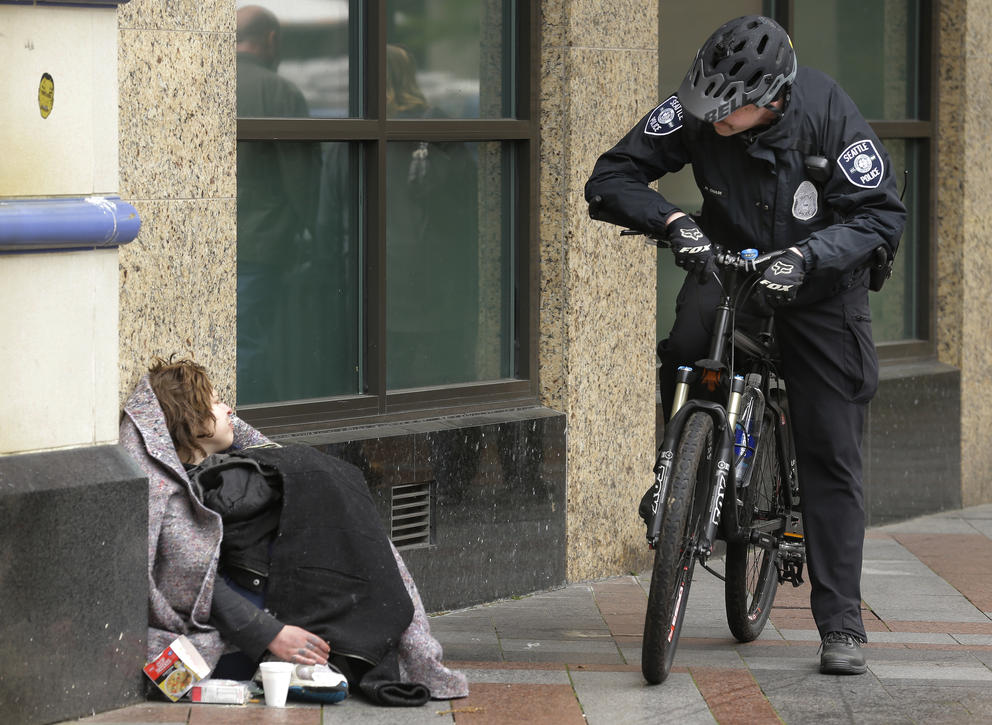She had been using crack cocaine, she said, and amassed 40 misdemeanors for theft and prostitution. She has 11 felony convictions, most of which are drug-related. They also include two assaults, once against a security guard trying to stop her from taking laundry detergent. Her record of arrests runs more than 25 pages. “It’s a lot,” she said.
And every time she would leave the jail — be it after four days or, her longest stretch, four years — she had nowhere to turn but back to the life she knew. “I just kinda got put back out in the streets homeless, couch surfing, hoteling it, prostituting, selling drugs, just doing whatever I could do to make some money to get to the next day and just do it all over again,” she said. “In that system there is a possibility always that I might go to jail every day.”
In recent months, the question of how best to help so-called “high barrier” individuals like Tunney and the people and businesses affected by repeated offenses has echoed through City Hall. With the rocket-fuel boost of KOMO’s “Seattle Is Dying” news special and a pair of reports on repeat offenders from a former mayoral adviser, business and neighborhood groups have been especially vocal.
The issue has become a wedge in Seattle, with competing interests calling for either harsher crackdowns by the criminal justice system or expanded services for people who cycle through the jails.
In the coming weeks, that debate could turn into a fight for dollars, as the Seattle City Council considers Mayor Jenny Durkan’s budget.
Durkan has proposed about $3 million for new, “enhanced” versions of what already exists in the current criminal justice system, such as probation and mandatory treatment for drug users. She’s also proposing a new 60-bed shelter and more transitional services for people getting out of jail after 12 to 48 hours. In rolling out her proposals, Durkan said, “Cities have become the new safety net of America.”
The most controversial proposal is a treatment program for substance-use disorders. The choice for people in the court system, according to mayoral advisor Robert Feldstein, would be treatment or jail. Upon completion of the program, the person would be assigned a probation officer.
A spokesperson from the Seattle Municipal Court said the details of the treatment program are still being ironed out, emphasizing that judges may use discretion when deciding next steps for someone who failed to complete treatment.
But some criminal justice reform advocates and sitting members of the council are skeptical of the approach and are wondering why the city doesn’t just fund what it already has, namely the Law Enforcement Assisted Diversion (LEAD) program, a pre-arrest diversion program tailored to provide as-needed help for these repeat offenders.
“We know we have an evidenced model through LEAD, and we know we have community partners that are ready to scale up more,” Councilmember Teresa Mosqueda told Crosscut.
Tunney, 48, said she has been clean for nearly three years now, an accomplishment she credited to LEAD. Despite her lengthy criminal record, her case managers helped her find housing in the new Liberty Bank building in the Central District, where she grew up.
The LEAD case manager “helped me construct a plan that was in line with my goals and with what was reachable for me,” she said while sitting in a coffee shop, wearing a Bluetooth neck band and a Seattle Central Student Ambassador nametag. “You know, it wasn't like, ‘Oh you can be a doctor,’ ” she said. “There were little steps: Finish treatment, go to whatever classes I needed to go through to get through the department of corrections system and do one thing at a time.”
LEAD is unique in that it is a pre-arrest diversion program and that compliance does not come with the threat of incarceration. While Tunney represents a best case scenario for LEAD, studies have shown the program to be an effective approach for exactly the repeat offenders identified by Seattle and King County. Co-founder Lisa Daugaard estimated LEAD could meaningfully help 80% of frequent repeat offenders.
“The evidence is very clear that LEAD is an effective intervention for that group,” Daugaard told the city council Wednesday.
LEAD enjoys near unanimous support from city and county officials, law enforcement and the courts. But the program, which has a budget of $4.5 million from several sources for its Seattle work, is over capacity. Case managers have loads close to 50 clients, when it should be about 25. Daugaard said the program will not be able to take new referrals in 2020 without new funding. Already, sex workers on Aurora, once commonly referred to LEAD, are being arrested instead.
The debate, then, is not so much over the validity of the current LEAD program, but whether the city ought to be scaling it up or experimenting with new approaches.
Representatives from the mayor’s office and Seattle Municipal Court have argued that, while they support LEAD, they need additional help to more immediately deal with people they believe to be a threat to public safety.
“There are folks we see who are repeat offenders and are not successful in LEAD or REACH [which does outreach],” Seattle Municipal Court Judge Adam Eisenberg told the city council last week. “And so as a judge, especially if there’s a community safety issue involved … we’re sort of stuck.”
Councilmember Sally Bagshaw said last week, “We’re not talking in lieu of [LEAD]. We’re still going to be using these tried-and-true programs, but we also know that not every program addresses every need out there. … I want to try some new stuff. I want to try some things that have been shown to work in other jurisdictions and are promising.”
But other council members pushed back, with a majority already apparently leaning toward increasing LEAD’s funding, possibly by redirecting the mayor’s proposed allotment for her own recommendations. “In a world of finite dollars, we have to make a decision of what will have the greatest impact,” said Councilmember Lisa Herbold.

Daugaard estimates LEAD is serving about 400 people who could be considered prolific offenders. Piecing together several county and city estimates, she guesses there are about 3,000 frequent offenders in the area. With her estimate that LEAD can meaningfully help 80% of high-barrier individuals, that’s 2,000 more people the program could help. “So it’s not a nontrivial number, and it's also not an impossibly large number,” she told Crosscut.
On Wednesday, representatives of LEAD joined King County Prosecutor Dan Satterberg, who told the city council that the program’s budget should be $9.5 million to keep up with current referral trends from the Seattle Police Department. Daugaard said a “very serious commitment” by the city would be to provide an additional $3.5 million.
“It deserves to be fully funded. … We’re here right now asking for money because we’ve underreacted to the situation,” said Satterberg.
The thing about LEAD, though, is that its treatment program can be slow — which its most vocal proponents say is simply what it takes. “When we have people who are repeatedly coming through the criminal justice system and they’re posing a community safety threat, we have to have a way of both serving their needs, but also serving the needs of a community and keeping the community safe,” Seattle Municipal Court Judge Damon Shadid told the council last week.
But Daugaard and others maintained that to make long-term, sustainable change, it would take time. “If you're really serious about changing the way you show up in the world and you have all the assets and support possible, it often takes years to make meaningful changes,” said Daugaard. “It is not going to take less than that for our population that has none of those supports and has a long, long history of people letting them down and not following through on commitments and not being there when they're needed.”
This story has been updated with a comment from the Seattle Municipal Court, clarifying details of the mayor's proposed treatment program.



